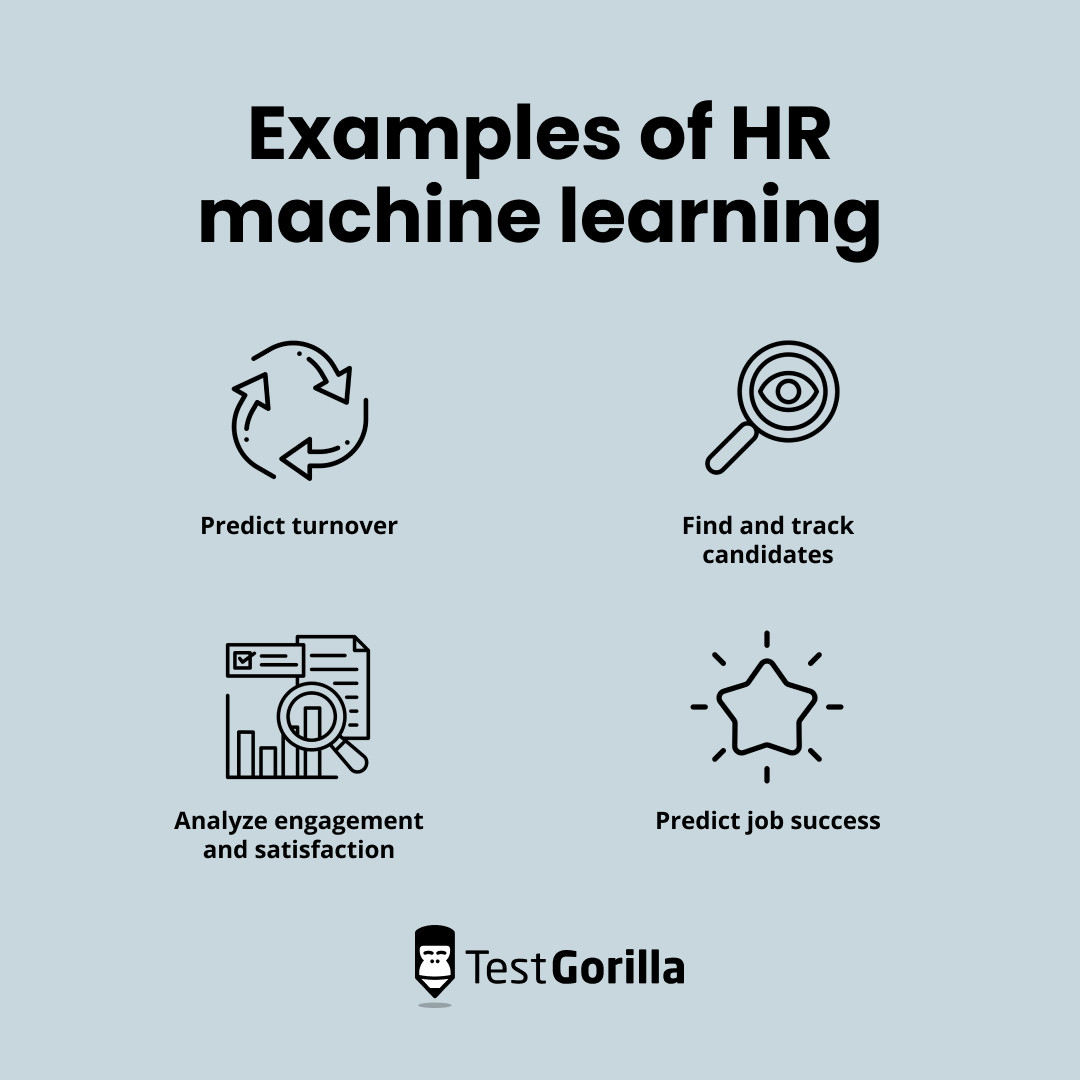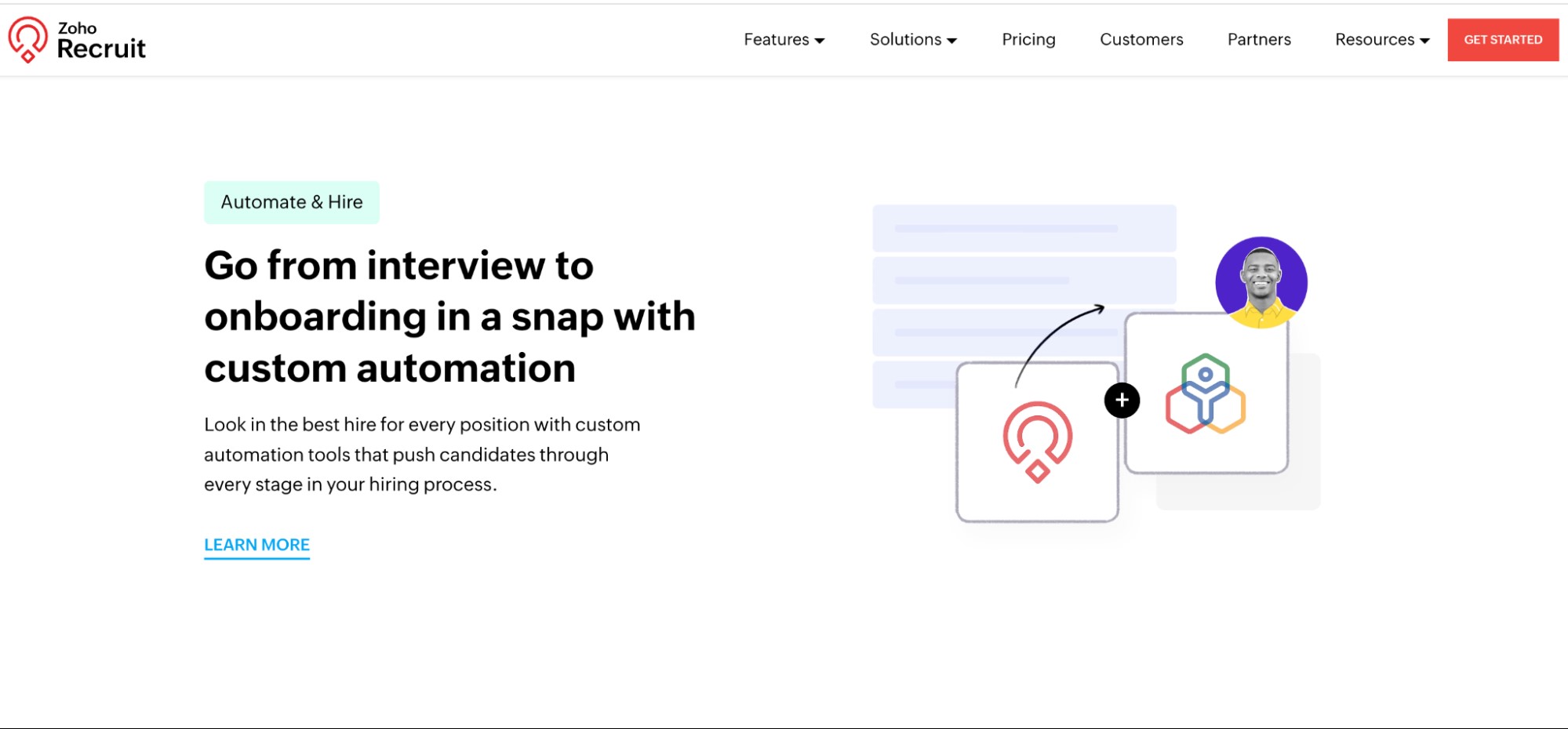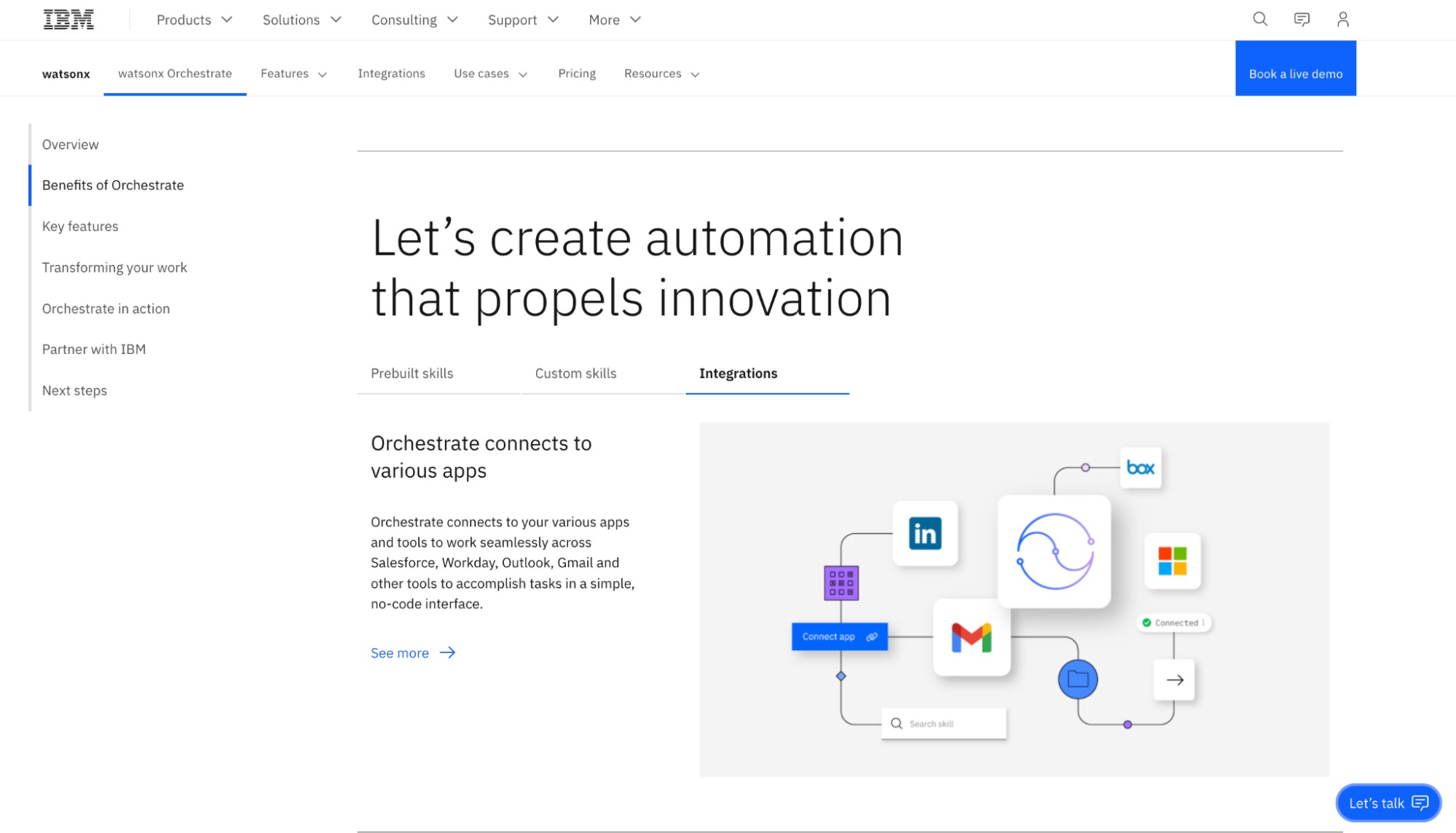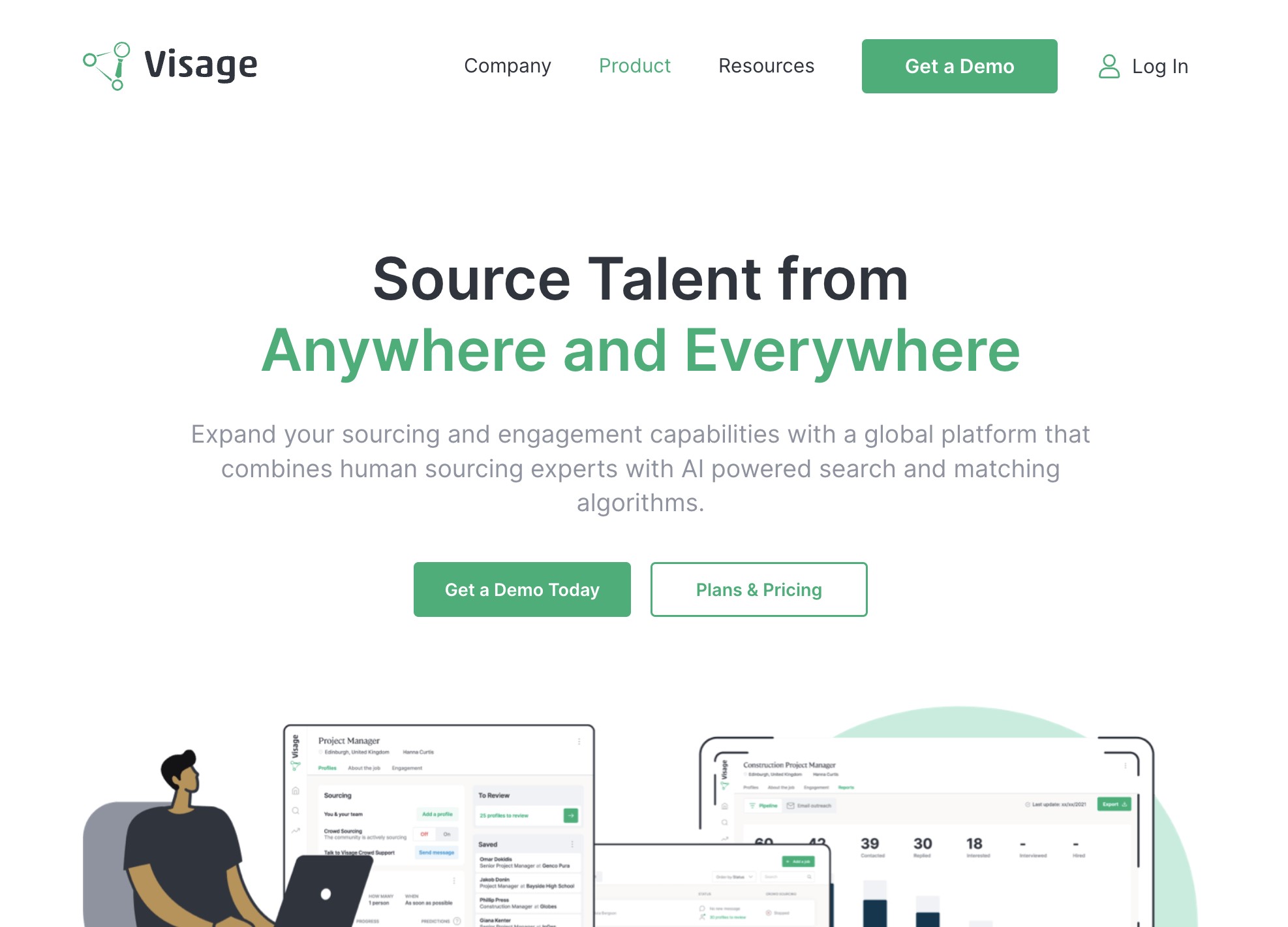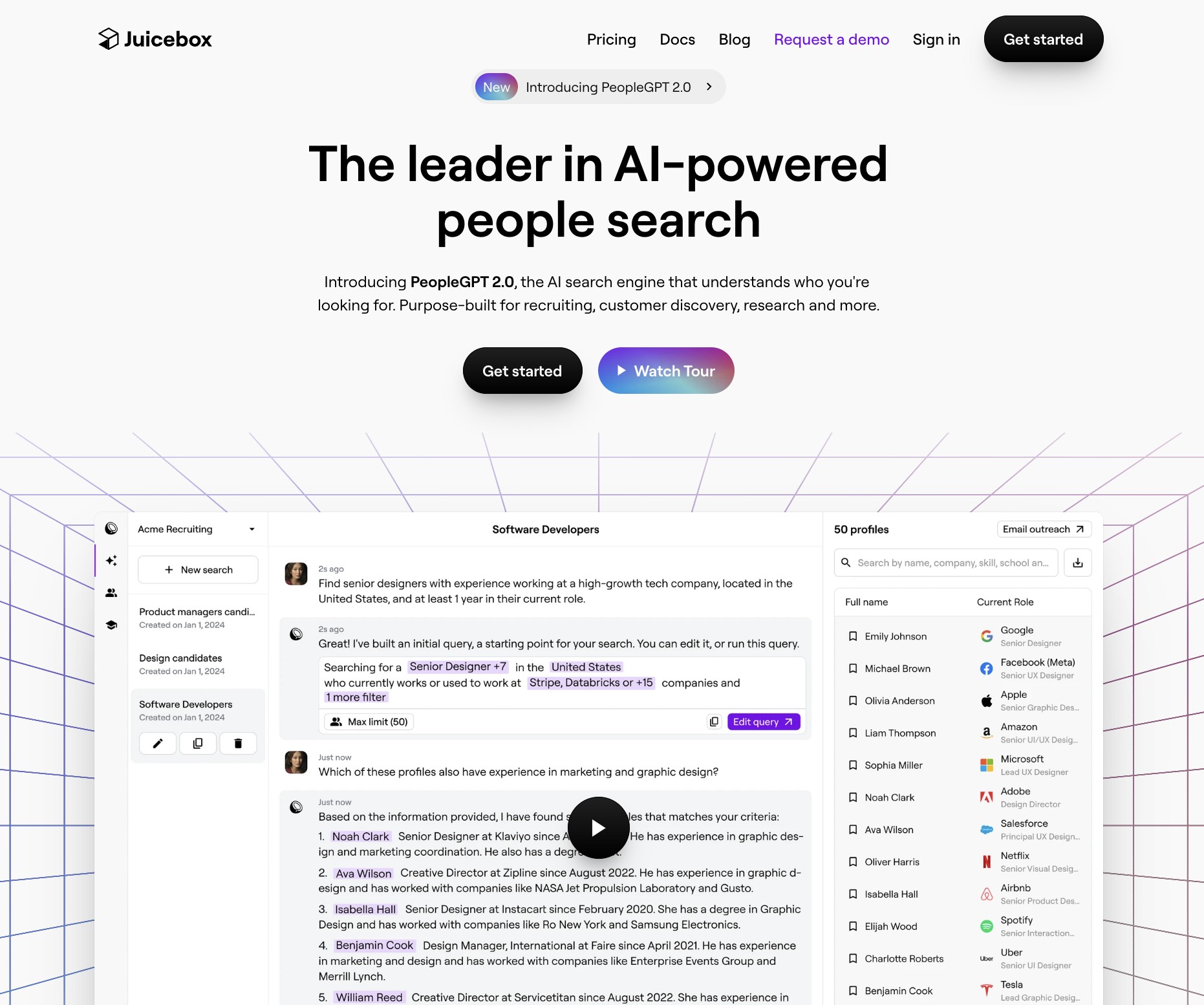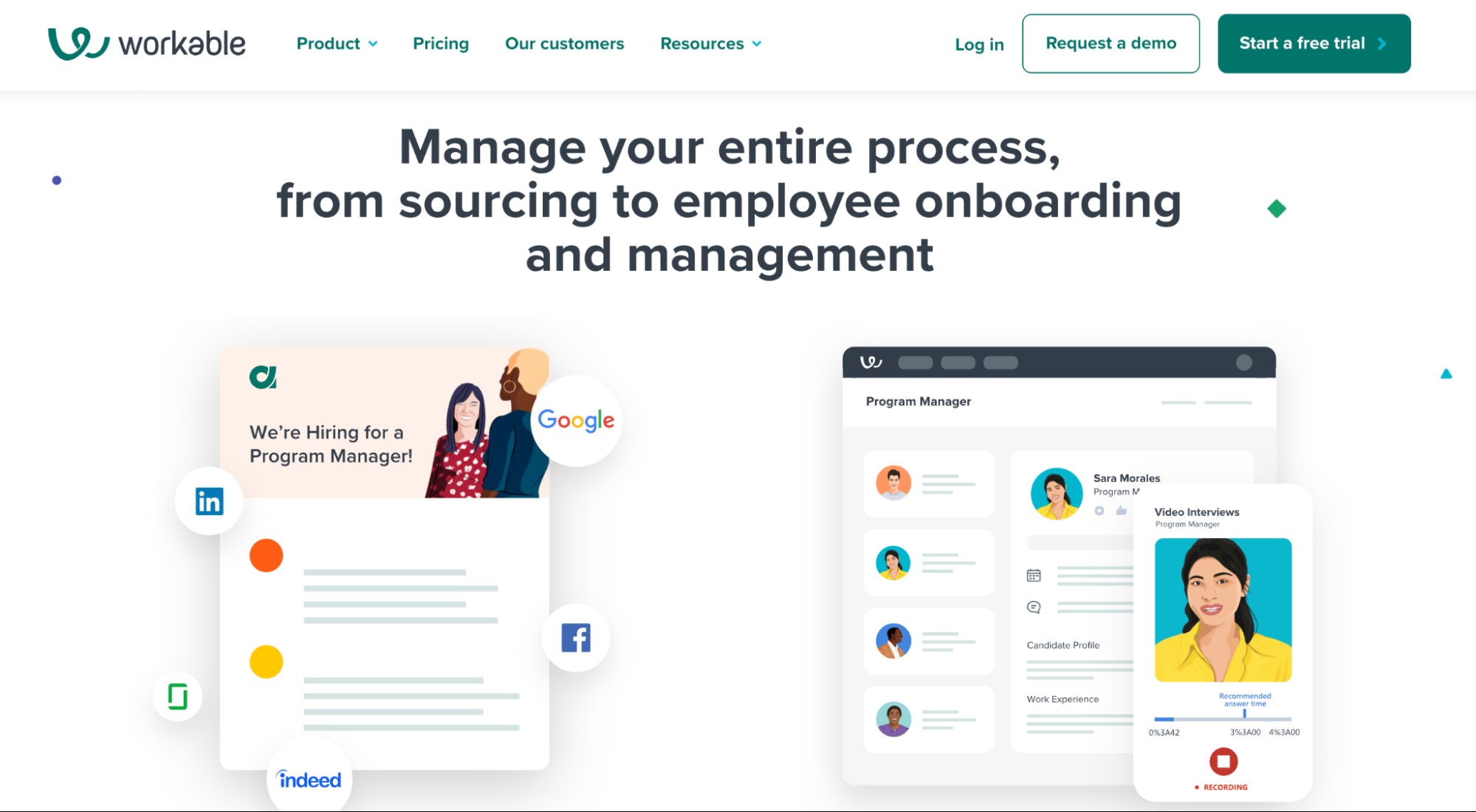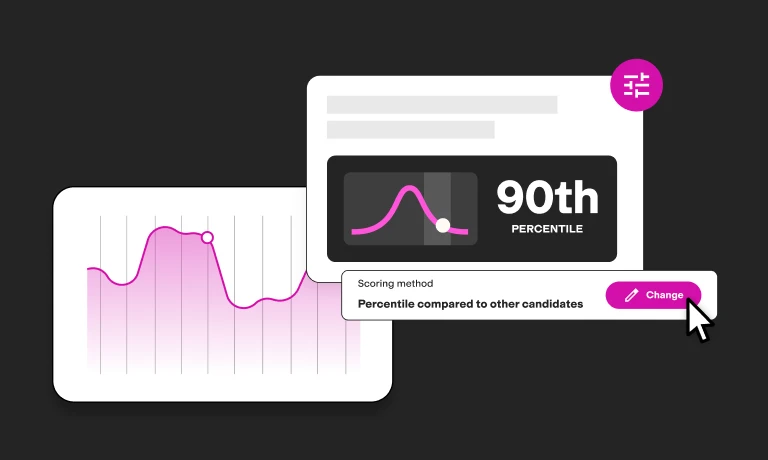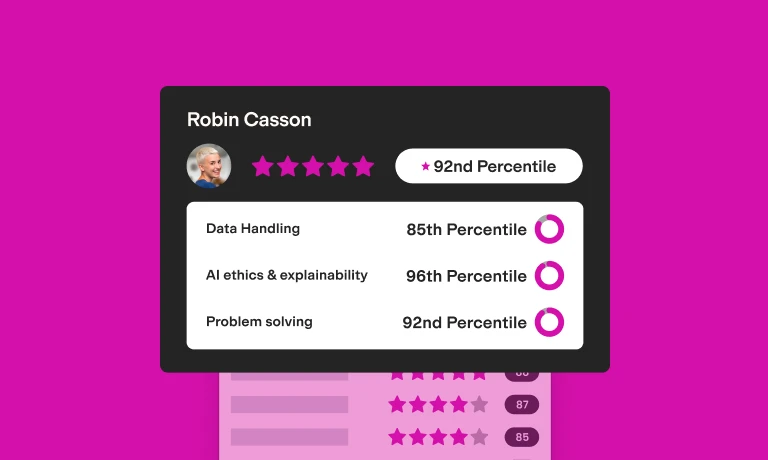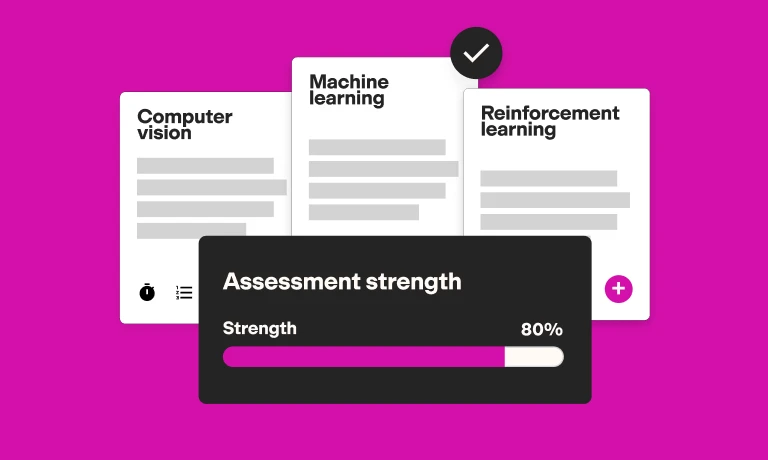Machine learning in HR: A guide for HR professionals wanting to make better decisions
Machine learning and artificial intelligence, or AI, are helping HR managers make faster, more accurate predictions and more informed decisions. According to Gartner, 81% of HR leaders already use the tech to improve efficiency. [1]
Machine learning is an important HR technology that helps to keep companies competitive, improve employee training, and reduce human error.
However, machine learning in HR arrives with the potential for bias and costly mistakes. Training AI on biased data and HR practices risks perpetuating the same discrimination – and there are privacy risks when training it on confidential data, too.
You can delegate many HR tasks to machine learning, but you need to plan strategically and keep humans at the heart of the process to reap its rewards.
In this guide, we show you how to use machine learning and AI in HR for the better and why attention to detail matters when managing it.
Table of contents
- What is HR machine learning?
- HR machine learning use cases: 4 examples
- Why is HR machine learning important to human resources professionals?
- The risks of machine learning for HR
- The benefits of machine learning in HR management
- 5 best HR machine learning platforms
- 6 best practices for leveraging machine learning for HR in your human resources department
- 3 examples of companies succeeding with machine learning in HR
- Master machine learning in HR and tighten up your process
- FAQs about machine learning in HR
What is HR machine learning?
HR machine learning uses algorithms and data patterns to help AI learn how to perform workforce management tasks.
HR managers feed data sets into AI to predict hiring and employee trends. With this strategy, there’s no programming or coding required because AI learns independently.
The broader and more accurate data sets are, the more reliable machine learning becomes.
However, AI can make harmful decisions if trained on biased, incomplete, or inaccurate data. We explore the potential risks later on in our guide.
What is the difference between AI and machine learning in HR?
AI is a collective term for technologies that mimic human intelligence and capabilities. For instance, it covers natural language processing, which analyzes and emulates human speech.
Machine learning, meanwhile, is an application of AI in HR. It’s a series of principles that helps intelligent systems make predictions and take action on your behalf.
Many people use the two terms interchangeably. Remember, however, that AI is capable of machine learning, but not all AI technologies use it.
HR machine learning use cases: 4 examples
Used effectively, machine learning in HR analytics helps you to:
Predict turnover
Find and track candidates
Analyze engagement and satisfaction
Predict job success
Let’s explore these use cases in more detail.
1. Predict turnover
AI can use machine learning to track data patterns between people who leave your company. For example, it can pull information from employee surveys, offboarding records, and HRIS systems.
HR managers can then use this data to infer what’s driving people to leave their business. Their AI could suggest that people of a specific demographic leave within two to three months of joining or that people with particular personality test scores are more likely to fall victim to involuntary turnover.
Using this information, you can make data-driven decisions to improve the employee experience for these demographics and nurture their needs to prevent this turnover.
2. Find and track candidates
Machine learning helps AI understand what to look for when sourcing candidates for roles. For instance, you could train it to read existing employee skills datasets, and compare this data with applicant’s test results.
Machine learning algorithms look deeply into objective data from your workforce to find and track people likely to be a good addition to your team.
However, you need to manage this process carefully so your AI doesn't fall back on biases such as age, sex, or gender. Instead, get it to focus purely on skills – for example, a candidate’s numerical reasoning.
3. Analyze engagement and satisfaction
Machine learning collates information from employee feedback to help you predict how they feel about your business. This might be data from recent workplace events, projects, or learning programs.
This data can help inform the changes you make to hiring processes, employee perks, and development plans. If the feedback data cites a desire for more learning opportunities, for instance, you can respond by investing in employee training programs.
Don’t rely on it to gauge opinions 100% of the time, though. For all AI is useful, you can't assume it knows everything about your staff – talk to them directly to understand the full context of the data your AI is giving you.
4. Predict job success
You can use machine learning in HR through tools such as resume screening software to predict how good a culture add a candidate is for a role. However, we don’t recommend that you rely entirely on resume data.
Experience isn’t a reliable predictor of how skilled someone is in a given role. There’s always a chance people exaggerate or lie on their resumes.
Therefore, focus primarily on skills if you want AI to predict job success. The best approach is to combine machine screening with talent assessment software and leave the final decision to a human professional.
The best insights on HR and recruitment, delivered to your inbox.
Biweekly updates. No spam. Unsubscribe any time.
Why is HR machine learning important to human resources professionals?
As Gartner's research confirms, machine learning is the future of HR. Companies not yet using AI or exploring machine learning risk falling behind rivals who use predictive analytics to support employees and find suitable talent more effectively.
What’s more, AI and machine learning are growing popular because business owners want to reduce human error in recruitment, thus preventing bad hires and their unnecessary costs.
HR managers use machine learning to upskill and reskill existing employees by pulling talent data and analyzing what each role needs.
Moreover, machine learning reduces the need for outside recruiting when paired with an internal talent marketplace. You’re making the most of the eager talent you already have onboard.
The risks of machine learning for HR
When poorly managed, AI and machine learning can cause legal and ethical headaches for human resource management.
Here’s a quick breakdown of the biggest risks, along with some useful case studies.
Accidental assumption of bias in data
Machine learning isn't biased or unethical by design. However, a recruitment AI could interpret that most employees in a specific company identify as men and, therefore, avoid hiring non-male applicants.
This has already caused problems in the HR industry. Amazon’s AI recruiter, AMZN.O, was scrapped because it kept discriminating against women through biased data.[2]
Service restrictions for specific groups of people
Without careful planning and testing, there’s a risk a machine could learn to restrict people unfairly.
Consider Uber, who faced a lawsuit from a black employee. Its driver security software, which uses facial recognition, locked and deactivated the user from its platform because it didn’t recognize him. We now know the company didn’t train AI on diverse enough groups of faces.[3]
Confidential data could become public knowledge
If you train generative AI to learn from protected data, there’s a chance of that data leaking to the public.
In a recent example, Samsung employees released sensitive code and meeting data into ChatGPT. Although the move probably saved staff time and effort, the AI learned from the data and assimilated it into its knowledge base. This meant anyone using ChatGPT outside of the company could now access those sensitive details.[4]
Lack of knowledge leads to AI activity going unchecked
Leaving AI to learn and develop without human insight leads to the “black box effect,” where people become reliant on the technology, unaware of the data it accesses and the tasks it performs.
It’s easy to counteract this effect. Simply employ and train people to check and maintain AI in-house, and be careful with the tasks you delegate.
The benefits of machine learning in HR management
Using AI in HR has risks, but when managed effectively, it offers many long-term benefits.
Here are the four most important advantages of machine learning in HR.
1. HR can handle larger groups of people
HR departments are overwhelmed with increasing applicant numbers. Thankfully, machine learning efficiently pores through masses of applications and helps recruiters narrow down confident decisions faster.
Consider Hilton Grand Vacations, which used machine learning to improve job descriptions and made it easier for HR to prioritize the best candidates. Its strategy led to a 5% boost in application conversions.[5]
2. Productivity in HR improves
Machine learning helps HR departments cut down time spent on menial, repetitive tasks so they can focus on engaging with employees and applicants.
BCG research suggests HR productivity increases by up to 30% with generative AI alone:
3. Planning and strategizing is easier
Machine learning helps HR make better-informed predictions for recruitment drives and growth planning using existing employee data. Therefore, it’s easier to plan ahead for future employee turnover rates and how they might affect your workforce’s composition.
In fact, MemSQL research claims 65% of companies interested and invested in machine learning claim the technology helps to improve decision making.[6]
4. Employee retention improves
With more effective planning come more efficient employee retention strategies.
Machine learning frees up HR time to deliver more meaningful support to employees, such as through learning and development. Therefore, it can encourage people to stay with a company for longer.
Consider AI such as RetainTalent, which predicts employee flight risk and suggests key
turnover factors. This tool, in particular, boasts a 90% forecasting accuracy rate, drawing on payroll data and HR records.[7]
5 best HR machine learning platforms
Now that we've explored the benefits of machine learning in HR, let's look at some of the top AI tools available.
Factors we considered
When researching machine learning platforms for HR, we prioritized the following factors:
Pricing
Ease of use
Specific HR functions
Number and type of time-consuming activities it can handle
Integration with other software
Security and compliance controls
Need for human oversight
Five of the best machine learning HR applications
Tool | Highlights |
1. Zoho Recruit | Full dashboard setup Candidate tagging and role matching Applicant review at-a-glance |
2. IBM watsonx Orchestrate | Integrates with the most popular HR tools Prebuilt HR automation skills Procurement and support for contingent workers |
3. Visage | Dual human-AI talent sourcing Simple third-party integration Candidate screening |
4. Juicebox | Intelligent candidate search engine Personalized communication Works from free |
5. Workable | Automated pipeline management Candidate tagging All-in-one onboarding coverage |
1. Zoho Recruit: Best for all-in-one management
Zoho Recruit offers a complete HR dashboard with relationship management and applicant tracking built on machine learning and automation.
The Zoho platform supports smart candidate matching based on various metrics, job descriptions, and applicant locations. The software enables tagging and percentage matching to measure suitability for your talent pool, too.
What’s more, data pulled through Zoho's AI helps to build snapshot profiles, making it easy to review applicants at a glance.
Pros | Cons |
- Integrates into its own CRM and ATS - Competitive pricing - Easy to use - Ideal for smaller operations - Integrates with several job boards, including LinkedIn | - Support isn’t always the most responsive - Not the most customizable system |
Rating: 4.4 out of five, 1598 reviews (G2)
Pricing as of December 2023: From free, priced models start at $30 per user per month
2. IBM watsonx Orchestrate: Best for high-end capabilities
IBM’s watsonx Orchestrate engine supports global brands such as Chevrolet, Panasonic, and The Weather Company.
It's a highly capable AI that generates digital HR workers that learn from you.
The product learns from your HR processes, but for faster setup, there are prebuilt skills ready to go. The software automates tasks and integrates with popular apps to become an all-in-one workflow management engine.
It’s trainable on custom language and skills you design and determine, making it infinitely scalable. It’s ideal, therefore, for companies looking to grow.
Pros | Cons |
- Market-leading technology - Built to free up HR time - Integrates with many different tools, such as candidate managers and payroll software - Endlessly scalable - Offers a contingent worker procurement service | - Customization and maintenance can require extensive skill - Can be costly for some companies to manage over time |
Rating: 4.2 out of five, 5 reviews (Capterra)
Pricing as of December 2023: From $200 per user per month, more for enterprises
3. Visage: Best for diversity and inclusion
Visage is a recruitment tool that combines human outsourcing with insights gleaned through machine learning. Its human-AI blend helps companies fight against potential biases that AI can sometimes struggle with on its own.
The service uses "crowd-sourcing" to deploy thousands of talent searchers, help HR automate follow-ups, and deliver data insights. It's one of the few recruiting platforms to combine the talents of humans and machines in the interest of better recruiting standards.
The tool integrates with various popular platforms, with the manufacturer stating it slides easily into most custom HR tech stacks.
Pros | Cons |
- Combines human and AI insights - Lots of third-party integrations - Ideal for increasing pipeline diversity - Helps to screen candidate profiles for specific job needs - Helps to identify potential hiring bias | - Pricing details not publicly available - Not widely reviewed |
Rating: Not available at the time of writing
Pricing as of December 2023: Available on request
4. Juicebox: Best for finding recruits
Juicebox is an AI-driven recruitment engine that integrates with applicant trackers and relationship managers to find diverse candidates for your pipeline.
The program uses a search engine called PeopleGPT to find suitable candidates for your job roles based on your parameters. The platform learns about applicant skill sets and experience while using your data as precedent.
The software reportedly scours more than 800 million profile results, making it one of the most extensive AI talent search engines available.
Pros | Cons |
- Impressive candidate search scope - Available from free - Easy to refine searches - Helps create personalized emails - Easily matches candidate skills to job roles | - The free version is limited, paid models are better value - Not widely reviewed |
Rating: Not available at the time of writing
Pricing as of December 2023: From free
5. Workable: Best for passive recruiting
Workable is employee onboarding software with an AI recruiter that builds ideal candidate profiles from the skills and criteria you feed it.
The service then combines its intelligent profile builder with a people search function that finds talented people who might be interested in what you have to offer.
It's a good tool for passive recruiting because it sources ideally skilled people who are not necessarily looking for work.
The software tags people you’re interested in and automatically moves them to the next stage of the program's funnel. Therefore, it helps you track where top talent is in the recruitment process without the need for manual checks.
Pros | Cons |
- An all-in-one applicant tracking system with leading AI features - Ideal for attracting and managing passive candidates - Easy to learn and scale up with - Free trial available - Good for keeping all recruiters on the same page | - Some users feel the software doesn’t always integrate smoothly with others - Might be a little expensive for smaller teams |
Rating: 4.6 out of five, 409 reviews (G2)
Pricing as of December 2023: From $149 per month for two active jobs.
6 best practices for leveraging machine learning for HR in your human resources department
Let’s run through some tips on how to make the most of your machine learning and HR strategy.
Using machine learning for HR: Ideas to consider
Best practice | In brief |
1. Use machine learning to assist learning and development | Train AI to learn about the skills your roles need and upskill workers to be more adaptable |
2. Upskill your employees in data literacy | Ensure your workers know AI’s limits and risks by testing and training them on how to handle data and machine learning |
3. Hire machine learning experts | Recruit skilled machine learning specialists to manage your AI and train it |
4. Use machine learning to build strategies | Train AI to collect data to inform growth strategies such as tackling turnover and filling skill gaps |
5. Combine machine learning with skill assessments to predict job success | Use AI to test applicants on relevant skills for objective insights; don't rely on resume keyword screening |
6. Have humans on standby | Always ensure human talent oversees AI decision-making for relevance and bias and to make decisions that need empathy and an understanding of context |
1. Use machine learning to assist learning and development
AI can learn about the skills your roles require together with the skills your workers currently possess. You can combine this data with learning management systems to create development opportunities.
AI platforms such as internal talent marketplaces help staff find suitable roles in-house by matching their skills and interests. Doing so helps to boost retention, reduce attrition, and improve employee engagement. Your company’s more transparent and easier to navigate.
A more transparent workplace, supported by machine learning, is more adaptable and agile – and thus, employees are around 30% more productive.
2. Upskill your employees in data literacy
Don’t assume you can manage a machine learning system with just one or two specialists. It pays to upskill your entire workforce in the tech so they understand how to use it to their advantage, and to ensure it’s working effectively.
The "black box effect" we mentioned previously can hide unethical and biased processes that AI gets away with if people don’t take the time to understand it properly.
Before setting up AI with machine learning, use talent assessments to inform learning and development opportunities around this new technology. You can judge employees’ understanding of machine learning concepts using TestGorilla’s dedicated assessment:
If you’re using a specific platform such as Azure or Amazon Web Services, roll out additional tests to judge further proficiency with these tools:
Then, use these tests to track progress and spot areas where your team needs support.
It's important to ensure shareholders, stakeholders, and directors understand the ramifications of machine learning, too. Keeping everyone on the same page avoids miscommunication and errors, which could be costly.
3. Hire machine learning experts
Hire a team of machine learning experts with specialized skills to keep an eye on AI for you. Doing so ensures you make the most of the technology and avoid any AI bias or misunderstandings.
Test for a blend of soft and hard skills so you’re hiring not just on people’s technical aptitude but also on how they align with your culture, principles, and existing workforce.
For instance, a machine learning engineer typically needs strong critical thinking and problem-solving skills, and to understand programming languages such as Python.
Create a custom talent assessment with four or five tests that target the skills required:
Then, use suggested skills tests for machine learning engineer roles to write accurate job descriptions. Remember to base roles on skills rather than candidate experience and to test applicants on them when they enter the recruitment funnel.
4. Use machine learning to build strategies
AI can pull data such as turnover rates and skills scoring to create a clearer picture of your human capital. Consider your long-term goals and use machine learning to look for data you could use to measure progress.
Let’s say you want to increase staff retention over the next year. Start by considering the data you’d need to measure HR’s effectiveness.
You need to know the average retention of your employees, any drivers for leaving the company, and whether or not there are any trends in certain demographics quitting.
Train AI to look for this data and then use this information to design an effective solution. You could use intelligent HR chatbots, for example, to engage more with employees and learn more about their individual needs.
Many HR professionals believe their roles are becoming more strategic thanks to the emergence of AI and its application within workforce planning. For example, up to 92% of HR staff in India believe their roles are more strategic than ever, thanks to the rise of more innovative tech.
5. Combine machine learning with skill assessments to predict job success
It's possible to use machine learning to help predict job success, but you should always use it with other tools and checks.
Relying on AI to screen keywords and resumes could lead to bad hires acting their way into roles. You need objective proof they’re good additions to the team.
Using skill tests is the best way to assess role suitability and plan for job success. Sew them into your application process and use them alongside AI so applicants test themselves before you interview them. You could send skills tests through a recruitment chatbot, for example.
Use a machine learning strategy to pull skills test data from existing employees to define the attributes your recruits need to succeed in your roles.
Let’s say you’re hiring a social media marketer. It’s likely you need someone who scores highly in attention to detail and is talented in TikTok and Instagram management.
Here are some tests you could include when assessing for such a role:
6. Support machine learning with human skills
Without human intervention, AI and machine learning in HR can make potentially harmful decisions that damage your employer branding.
You need skilled humans on standby to understand the data AI pulls, to maintain its processes, and to plan for best practices.
Ultimately, human recruiters should always make the final hiring decision. AI can't empathize with your needs and is, despite its impressive evolution, still too limited for us to delegate to completely.
Move employees with machine learning skills into roles where they can check AI’s work for errors and bias. Remember, you should use AI and machine learning to support HR workers, not replace them.
3 examples of companies succeeding with machine learning in HR
We’ve chosen three companies that are thriving thanks to the way they use machine learning in HR for inspiration.
Let’s break down their AI programs to see how you can use this technology in your own company.
IBM
Unsurprisingly, IBM uses its pioneering machine learning product to help reduce its own employee attrition.
Using Watson to analyze turnover trends and collate data from employees who leave the company, the firm has trained its AI to advise which employees are at higher risk of leaving than others. It’s reportedly 95% accurate.
Beyond this, the business confirms it's saved more than $300,000 in retention expenses by pivoting to Watson.[8]
Amadeus
Amadeus, a travel technology firm, uses machine learning to help train employees and service partners. It created the Amadeus Learning Universe, or ALU, through Valamis – which personalizes individual learning experiences.
Personalized learning platforms such as the ALU learn about what its users need and present study materials relevant to their wants and needs. For HR, there’s the extra benefit of intelligent progress tracking.
Following its initial setup, ALU is now accessible across 195 countries, with more than a million users ready to engage.[9]
A global retail chain using Lensa
A global retail chain facing rising hire costs and hiring quality challenges turned to Lensa AI to help streamline its recruitment strategy.
Lensa is a role-matching service that uses machine learning and intelligent language processors to align candidates confidently to open roles.
By using the software, the retailer managed to drive down time-to-hire by half and found it could make better-informed decisions while keeping its processes efficient and engaging.[10]
Master machine learning in HR and tighten up your process
Machine learning in HR is proving to be more than a passing trend. It's helping to cut hiring time, boost employee satisfaction, and help top talent find supportive businesses.
However, AI isn’t a set-it-and-leave-it deal. The best machine learning applications benefit from human oversight – reducing bias and keeping your processes legal.
Now that you know more about the impact of machine learning on HR, follow up with our guide to applicant tracking systems and learn how to keep in touch with your recruits.
From there, take a deep dive into our guide to HR technology trends for a complete overview of the best tech practices for people management.
Then, take your first steps toward skills-based hiring and employee management with help from TestGorilla’s assessment library.
FAQs about machine learning in HR
Here are some common questions regarding machine learning for HR to help inspire you.
How is machine learning used in HR?
HR departments use machine learning to match candidates to job roles, predict turnover and attrition, and plan their workforces for challenges forecasted by AI.
How could AI and machine learning be used to address existing HR problems?
AI and machine learning help smaller HR teams prioritize large volumes of job applicants, analyze skills test data, and create content such as hiring templates.
Why can’t AI and machine learning replace humans in HR?
Some aspects of HR always need human empathy and insight, such as developing employees, making final hiring decisions, and assessing hiring bias. AI and machine learning could make biased decisions without human insight and risk leaking sensitive data.
Sources
1. “AI in HR: A Guide to Implementing AI in Your HR Organization”. Gartner. Retrieved December 12, 2023. https://www.gartner.com/en/human-resources/topics/artificial-intelligence-in-hr
2. Meyer, David. (October 10, 2018). “Amazon Reportedly Killed an AI Recruitment System Because It Couldn't Stop the Tool from Discriminating Against Women”. Yahoo! Finance. Retrieved December 12, 2023. https://finance.yahoo.com/news/amazon-reportedly-killed-ai-recruitment-100042269.html
3. Booth, Robert. (October 5, 2021). “Ex-Uber driver takes legal action over ‘racist’ face-recognition software”. The Guardian. Retrieved December 12, 2023. https://www.theguardian.com/technology/2021/oct/05/ex-uber-driver-takes-legal-action-over-racist-face-recognition-software
4. Mauran, Cecily. (April 6, 2023). “Whoops, Samsung workers accidentally leaked trade secrets via ChatGPT”. Mashable. Retrieved December 12, 2023. https://mashable.com/article/samsung-chatgpt-leak-details
5. “Enhancing the Candidate Experience With Google Cloud's Talent Solution”. Symphony Talent. Retrieved December 12, 2023. https://resources.symphonytalent.com/case-studies/gcts-hgv
6. “Survey Finds Machine Learning and Artificial Intelligence are Top Business Priorities”. (February 7, 2018). MemSQL via GlobeNewswire. Retrieved December 12, 2023.
7. Dhaenens, Andrew; Sanders, Karin; Williams, Mary-Anne. (May 16, 2023). “Business AI: the game-changer in predicting and enhancing employee retention”. BusinessThink. Retrieved December 12, 2023. https://www.businessthink.unsw.edu.au/articles/ai-predicting-employee-retention
8. Rosenbaum, Eric. (April 3, 2019). “IBM artificial intelligence can predict with 95% accuracy which workers are about to quit their jobs”. CNBC Work. Retrieved December 12, 2023. https://www.cnbc.com/2019/04/03/ibm-ai-can-predict-with-95-percent-accuracy-which-employees-will-quit.html
9. “Scaling Personalized Learning for 1 Million Users”. Valamis. Retrieved December 12, 2023. https://www.valamis.com/customers/amadeus
10. Frackiewicz, Marcin. (4 April, 2023). “Lensa AI’s Success Stories: Real-Life Examples of Improved Recruitment Processes”. TS2. Retrieved December 12, 2023. https://ts2.space/en/lensa-ais-success-stories-real-life-examples-of-improved-recruitment-processes/
You've scrolled this far
Why not try TestGorilla for free, and see what happens when you put skills first.


